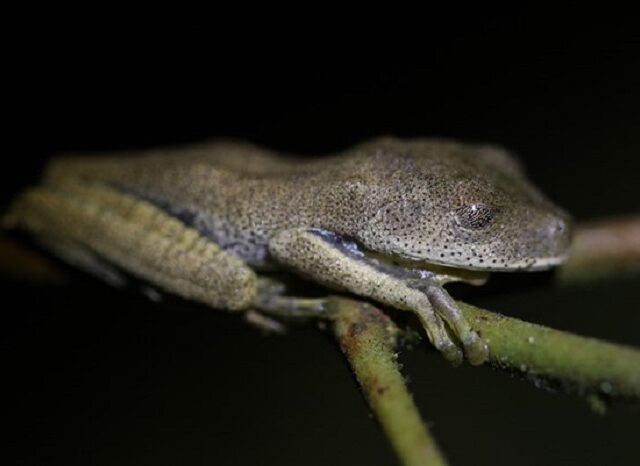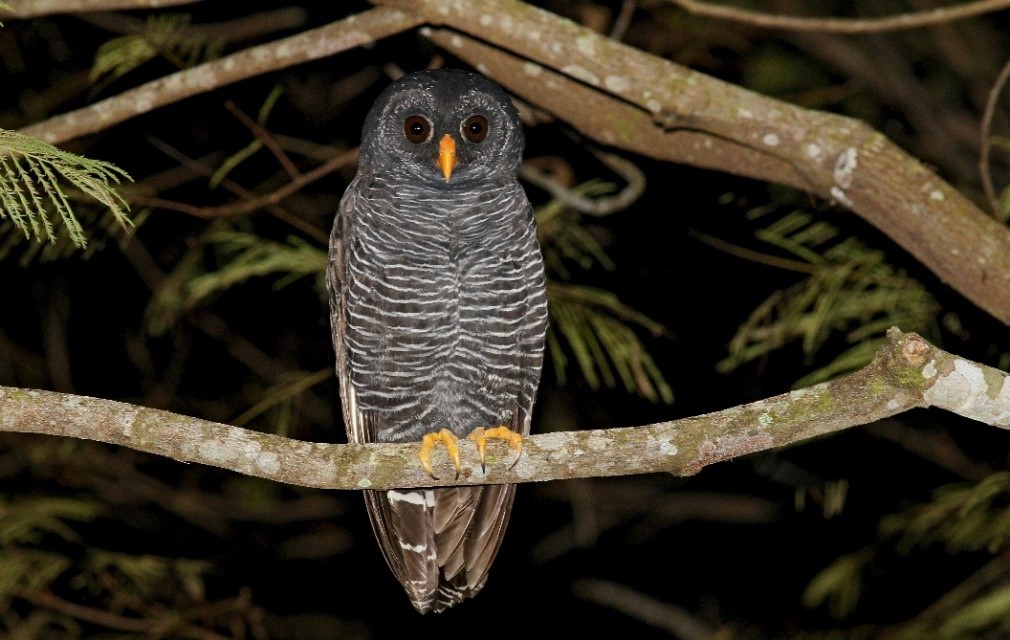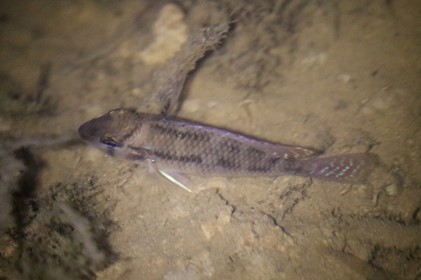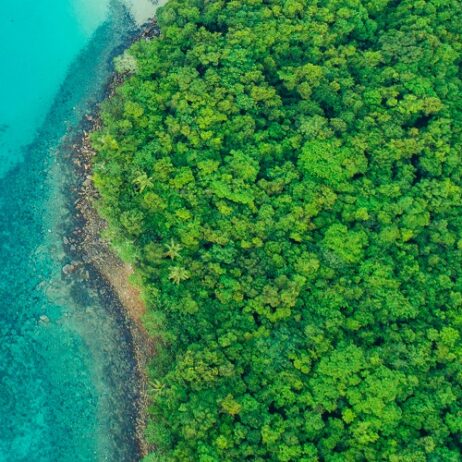
The Sensitive Treefrog (Hypsiboas semilineatus) is restricted to Brazil’s Atlantic Forest and is easy to find in the wetlands at night. This species is polymorphic and individuals showing a wide variety of colours and patterns can be seen on a night hike at REGUA. Image credit: Lee Dingain.
This is the second of two stories by Lee Dingain, UK representative for REGUA, who writes from the field about a sanctuary – Brazil’s Atlantic Forest – you can help expand this year by supporting our Buy an Acre programme. This article continues straight on from part one, which you can read here.
A little further on I reach a viewpoint across the open expanse of the wetland. The dark mass of the forested Serra dos Órgãos mountains looms in the background, their peaks sharply defined by the bright band of the Milky Way and mirrored on the still surface of the water.
Switching off the torch, a Tropical Screech-Owl (Megascops choliba) starts calling and the pale shapes of hundreds of roosting Cattle Egrets (Bubulcus ibis) appear from the shadowy outlines of the tree-covered islands as my eyes adjust. After spending a few minutes taking in the scene, I switch the torch back on and scan the surface of the water.
Groups of Capybara (Hydrochoerus hydrochaeris), the world’s largest rodent, bark in alarm and submerge as the beam swings past them, and the eyes of Broad-snouted Caimans (Caiman latirostris) glint above the surface, patiently waiting for fish to wander within range. I count 41 Caiman this evening, my highest count at the wetland to date.

You can explore REGUA’s Atlantic Forest reserve via our interactive map here. Image credit: WLT.
Walking the Yellow Trail today, it is difficult to imagine that just 17 years ago the 99 acres (40 hectares) of lakes and surrounding lowland forest were not here at all. One of REGUA’s many conservation successes, the creation of the wetland began in 2004. Nicholas Locke, REGUA’s president, had a vision to restore the Tabebuia cassinoides swamp that once existed here, before the trees were cleared and the land drained to make way for pasture and crops.
In addition to planting stands of Tabebuia cassinoides, Nicholas and his team also reforested the surrounding lowlands with Atlantic Forest tree species. As the wetland became more established, the water birds, Capybara and Caiman moved back in naturally, in turn attracting predators such as Crab-eating Fox (Cerdocyon thous), Neotropical Otter (Lontra longicaudis), and Puma (Puma concolor).

A bird of mature forest, the Black-banded Owl (Ciccaba huhula), is most often encountered on night-birding excursions to older growth forest at REGUA but is starting to show up in the reforested areas around the wetland as they mature. Image credit: Alan Martin
Since I first visited REGUA in 2006, I have witnessed a dramatic change in the nocturnal bird species present around the wetland. As REGUA’s reforestation expanded, birds associated with open habitats such as Giant Snipe (Gallinago undulata), American Barn Owl (Tyto furcate), Striped Owl (Asio clamator), Short-tailed Nighthawk (Lurocalis semitorquatus), and Scissor-tailed Nightjar (Hydropsalis torquate) – once encountered here frequently at night – have been replaced by forest edge species such as Common Potoo (Nyctibius griseus), Tawny-browed Owl (Pulsatrix koeniswaldiana), Black-banded Owl (Ciccaba huhula), and even the rare Stygian Owl (Asio stygius). Surely it is just a matter of time before forest interior species such as Black-capped Screech-Owl (Megascops atricapilla) and Long-tailed Potoo (Nyctibius aethereus), present in older growth forest at REGUA, take up residence around the wetland as the forest matures.

Pearl Cichlid (Geophagus brasiliensis), endemic to Atlantic Forest and commonly kept as ornamental fish, are common at the REGUA wetland and much easier to see at night than during the day. Image credit: Lee Dingain
Night hikes are also good for seeing fish. For the next hour or so I continue slowly along the trail towards the tower hide. Reaching a small bridge, I point the torch down to the water where schools of Pearl Cichlid (Geophagus brasiliensis), a fish species endemic to the Atlantic Forest, and commonly kept in aquariums, hang in the shallows close to the bank, unconcerned by the light.
With my torch battery running low I decide to head quickly back to the lodge, on the way picking out a group of roosting Great Kiskadees (Pitangus sulphuratus), a Purple Gallinule (Porphyrio martinicus), and two Ghost Yellow (Eurema albula sinoe) butterflies roosting in the lakeside vegetation. I wonder… what I will see on my next night hike at REGUA?

